The Disney parks are known for their immersive and magical experiences. These experiences are possible because of clever uses of engineering and physics. From the Haunted Mansion’s eerie illusions to the thrilling rides of Space Mountain, Disney parks integrate a variety of physical principles and techniques to create immersive attractions.
Let’s explore some of the fascinating physics behind Disney’s magic, finished with a quiz!
Related: Do You Know All the Technological Advancements at the Disney Parks?
The Illusion of Pepper’s Ghost
One of the most famous techniques used in Disney parks is Pepper’s Ghost, which creates the illusion of ghosts in attractions like the Haunted Mansion. This effect uses a sheet of glass and carefully positioned lighting to reflect images of objects or actors, making them appear as if they are floating in the air. The same principle is cleverly employed in newer attractions like “Star Wars: Rise of the Resistance” to create holographic effects.
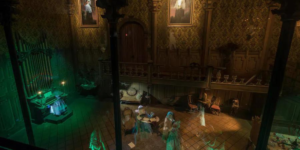
The Stretching Room Mystery
In Disneyland’s Haunted Mansion, the stretching room creates an illusion that plays with guests’ perception of space. The trick is achieved by an elevator, which increases the room’s height. This dual motion contributes to the eerie feeling that the room is magically growing.
Projection-Mapping and Holograms
Projection mapping is a technique that Disney uses extensively to bring scenes to life, as seen in the fireworks shows. By projecting images onto three-dimensional surfaces, Disney creates dynamic visuals that enhance the storytelling. This method is also used in rides like “The Seas with Nemo & Friends,” where animated characters appear to interact with the environment and guests.
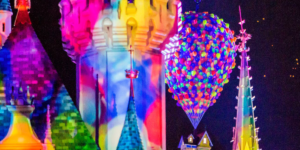
Forced Perspective in Architecture
Forced perspective is a design technique used throughout Disney parks to manipulate visual perception. For instance, Cinderella’s Castle appears much taller than it is because the upper sections are constructed with smaller windows and bricks, creating an illusion of greater height. This technique maximizes space while enhancing the grandeur of the structures.
Hydraulic and Pneumatic Systems
Hydraulic systems are key to many Disney attractions, such as “Soarin’” and “Indiana Jones Adventure.” These systems use pressurized fluids to power movements, providing smooth, realistic motions that mimic flying or driving over rough terrain. Similarly, pneumatic systems, which use compressed air, are employed in some attractions to create sudden bursts of motion, adding to the excitement.
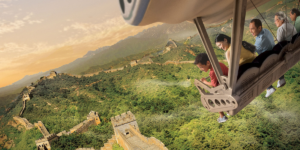
Linear Induction Motors and Magnetism
Rides like “Rock ‘n’ Roller Coaster” and “Tron Lightcycle Power Run” use linear induction motors to achieve rapid acceleration without traditional chains or gears. These motors generate magnetic fields that propel the ride vehicles forward at high speeds, offering a smooth and powerful launch experience.
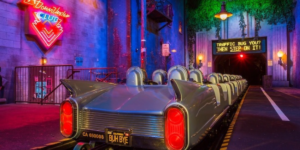
Animatronics and Illusions
Disney’s animatronics, such as the Yeti in “Expedition Everest,” combine mechanical engineering and illusion techniques. While the Yeti itself might be stationary, strobe lights and sound effects create the illusion of movement, adding to the suspense and thrill of the ride.
Related: Do You Know the History Behind Your Favorite Disneyland Attractions?
Trackless Ride Systems
In attractions like “Rise of the Resistance,” Disney uses trackless ride systems, which allow vehicles to move freely in any direction. These systems are powered by a combination of Wi-Fi and onboard sensors, providing a seamless and immersive ride experience without visible tracks.
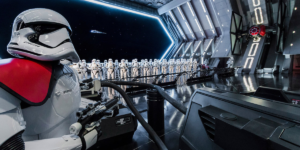
Through these and many other techniques, Disney parks transform the laws of physics into enchanting experiences. The blend of science and storytelling ensures that every ride and show not only entertains but also amazes visitors with the seamless integration of technology and magic.
The Quiz
It’s time to test your knowledge on the physics behind Disney!

No responses yet